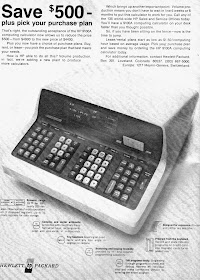Sunday, August 31, 2014
Toronto Harbour Commission building
The Harbour Commission Building, built on the water in 1910.
Captured German U boat visits the site in 1919
By the mid 1920s the harbour was being filled in as part of the building boom in downtown Toronto and the shoreline became further and further from the building.
 |
| Mike Filey, Look at Us Now: Toronto Sun 1971 |
1971
1978
Today, about 300 meters from the lake, completely landlocked and in danger of drowning in the condo developments, it is still an attractive and impressive building.
We used to make things in this country. #164: Abbott's Silent Family Sewing Machine, St. Catharines, Ontario
Displayed at the heritage fair at Odessa, Ontario several weeks ago. Happily, V. B. Simkins is still in business, and has a fascinating history.
At one time, there were a huge number of factories making sewing machines in Canada. See Needlebar for the full list.
John W. Abbott founded a small sewing machine company in St. Catharines around 1865. Six years later, with the help of 12 men and a 3 horse power steam engine, the "manufactory" was cranking out 2500 machines a year. Its machines gained a reputation for reliability.
According to a 1980 article, "A Stitch in Time: Sewing Machine Industry of Ontario, 1860-1897" by Martha Eckmann Brent of the Ontario Museum Association:
"The Abbott Company manufactured a single-thread machine called Abbott's Noiseless Family Sewing Machine. This small machine was peculiar in that unlike most chain-stitch machines it could be worked either by hand or treadle. The Abbott was arranged for either light or heavy sewing and to prove its "combination" qualities it was put to the test at the 1867 Provincial Exhibition. The machine, which "walked through a piece of shingle and a fine piece of muslin, without change of needle," was awarded a first class prize and diploma over such competitors as Howe, Singer, Wheeler and Wilson, and various other Canadian machines.
Although Abbott's machines were manufactured in St. Catharines, they were sold through two general agents in Toronto: G.W. Grout and Company (until 1868) and W.H. White and Company (1868-72). Acclaimed as the best family sewing machine, single- or double-thread, that could be purchased anywhere for the price, the Abbott sold in 1868 for fifteen dollars by itself or twenty-three dollars with a black walnut stand.
John W. Abbott died in 1872 and although his two sons were involved in the business, the company did not continue manufacturing after the death of its founder."
Saturday, August 30, 2014
Locomotive "Pioneer" of the Cumberland Railroad
 |
| http://www.gutenberg.org/files/28160/28160-h/28160-h.htm |
Update June 2018.
Now on display at the B&O museum in Baltimore, a very fine museum, if you're in the neighbourhood.
Friday, August 29, 2014
Autogyros for all!
Thursday, August 28, 2014
America Goes to War
I picked up this little 4x7" book at a used book store a while ago, published by Columbia Educational Books in 1941. Given that Pearl Harbour was attacked on Dec 7 1941, they sure didn't waste any time writing and printing it. The last date mentioned is Dec 15th so it appears that the book went to press in less than 15 days. Predictably the content of the 125 pages could be considered straight-up propaganda designed to rally the American people to the cause but I find it interesting that the slogan "Remember Pearl Harbour" was already in print only days after the attack.
Shelton Versatool
I recently picked up this 1950's-era multi-tool. Below, as you carry it:
To use it, you pull the screwdriver blade carrier out of the recess in the tool:
Then, you select which of the three blades (2 flat blades, one Phillips) you want to use:
Finally, you push the telescoping section back into the recess to lock the selected blade in position, and use the lever close to the knurled handle to select forward or reverse ratcheting action.
No maker's name is on the tool, except for this decal on the end of the handle. Apparently, among other retail venues, these tools were sold to various companies as advertising promotions. Apparently, this particular tool was used to advertise a firm called Demaco.
Below, another example in my possession stamped "National Chemsearch" on the barrel, clearly a promotional item for this large company.
The first tool carries an American patent number: 2,662,568, issued in 1953 to one R.P. Lavietes:
The second example carries U.S. Patent No. 3,799,226, issued in 1974 to Raymond P. Lavietes. It would seem that, twenty years later, he was still making improvements on his invention.
Below, a third, incomplete example stamped "New Holland" on the shank and with the 1953 patent number:
Raymond P. Lavietes lived in Shelton, Connecticut, and assigned his patent to the Shelton Plane and Tool Manufacturing Company. Raymond was a Harvard graduate, and the son of Abraham Lavietes who had purchased what was to become the Shelton Basket Company, moving it from Columbia, Connecticut to Shelton in 1911. He went on to found another company to produce tools, notably planes using an unusual blade adjustment patented in 1933. (For photos of the firm, visit WK Fine Tools.) The plane manufacturing business was sold to Stanley in 1954 after which the company obviously persisted with the manufacture of unusual tools like this multi-tool, which eventually morphed into the Shelton Socketool.
For more detailed information on this tool, visit another page on WK Fine Tools.
Wednesday, August 27, 2014
Fur-Fish-Game Magazine, Jan. 1962
Different times indeed. If you were wondering about the content, looking at the back cover will tell you all you want to know.
Still around today http://www.furfishgame.com/
Still around today http://www.furfishgame.com/
X-ray cinematograph machine, 1936
Tuesday, August 26, 2014
Oro Wrench
An elegantly curved combination wrench, probably from the early twenties. The only mark on it is handwritten name "Oro" is forged onto one side Another vanished tool maker or tool brand?






















.jpg)
























